Abstract
Anterior dislocation of lunate is rare, it can result in median nerve compression and attritional rupture of flexor tendon when delay diagnosed. We report a patient with second finger flexor tendon rupture and carpal tunnel syndrome caused by neglected anterior lunate dislocation. Patient underwent operative treatment for that excised lunate, released carpal tunnel and reconstructed second flexor tendon using palmaris longus tendon. One year after surgery, fucntional and neurologic symptom were recovered. Also carpal alignment was maintained on plain radiographs, even after excision of the lunate.
Go to : 
References
1. Dobyns JH, Linscheid RL, Chao EY, et al. Traumatic instability of the wrist. American Academy of Orthopaedic Surgeons , editor. Instructional course lectures. St. Louis: C.V. Mosby;24:1975. p. 182–99.
2. Cara J, Narvaez A, de la Varga V, Guerado E. Median nerve neuropathy from an old lunate dislocation. Acta Orthop Belg. 1998; 64:100–3.
3. Johnston GH, Bowen CV. Attritional flexor tendon ruptures by an old lunate dislocation. J Hand Surg Am. 1988; 13:701–3.

4. Cooney WP, Linscheid RL, Dobyns JH. Fractures and dislocations of the wrist. Rockwood CA, Green DP, editors. Rockwood and Green's fractures in adults. 6th ed.Philadelphia: Lippincott-Raven;1996. p. 745–867.
5. Mayfield JK, Johnson RP, Kilcoyne RK. Carpal dislocations: pathomechanics and progressive perilunar instability. J Hand Surg Am. 1980; 5:226–41.

6. Neviaser RJ. Proximal row carpectomy for posttraumatic disorders of the carpus. J Hand Surg Am. 1983; 8:301–5.

7. Russell TB. Inter-carpal dislocations and fracture-dislocations; a review of 59 cases. J Bone Joint Surg Br. 1949; 31:524–31.
8. Kim DH, Shin JY, Shin KC. The treatment of volar lunate dislocation and perilunar dislocation. J Korean Soc Fract. 1995; 8:902–7.
9. Kawai H, Yamamoto K, Yamamoto T, Tada K, Kaga K. Excision of the lunate in Kienbock's disease. Results after long-term follow-up. J Bone Joint Surg Br. 1988; 70:287–92.
Go to : 
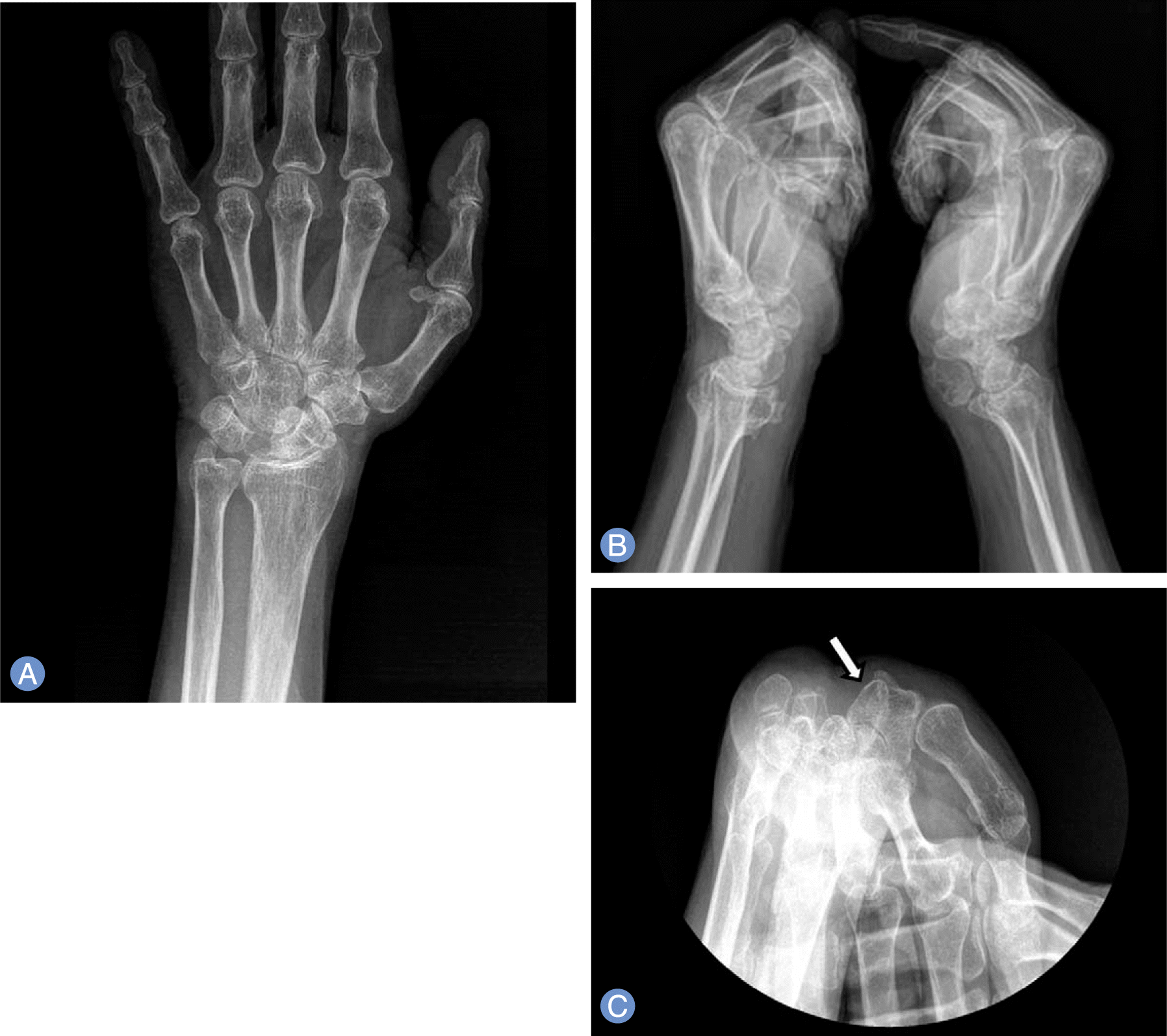 | Fig. 1.Preoperative images of left wrist. (A) Radiograph (anteroposterior view) shows destroyed Gilula line. (B) Radiograph (lateral view) shows lunate dislocated anteriorly to the rest of the carpus. (C) Radiograph (carpal tunnel view) shows narrow carpal canal space-occupied by dislocated lunate (arrow). |
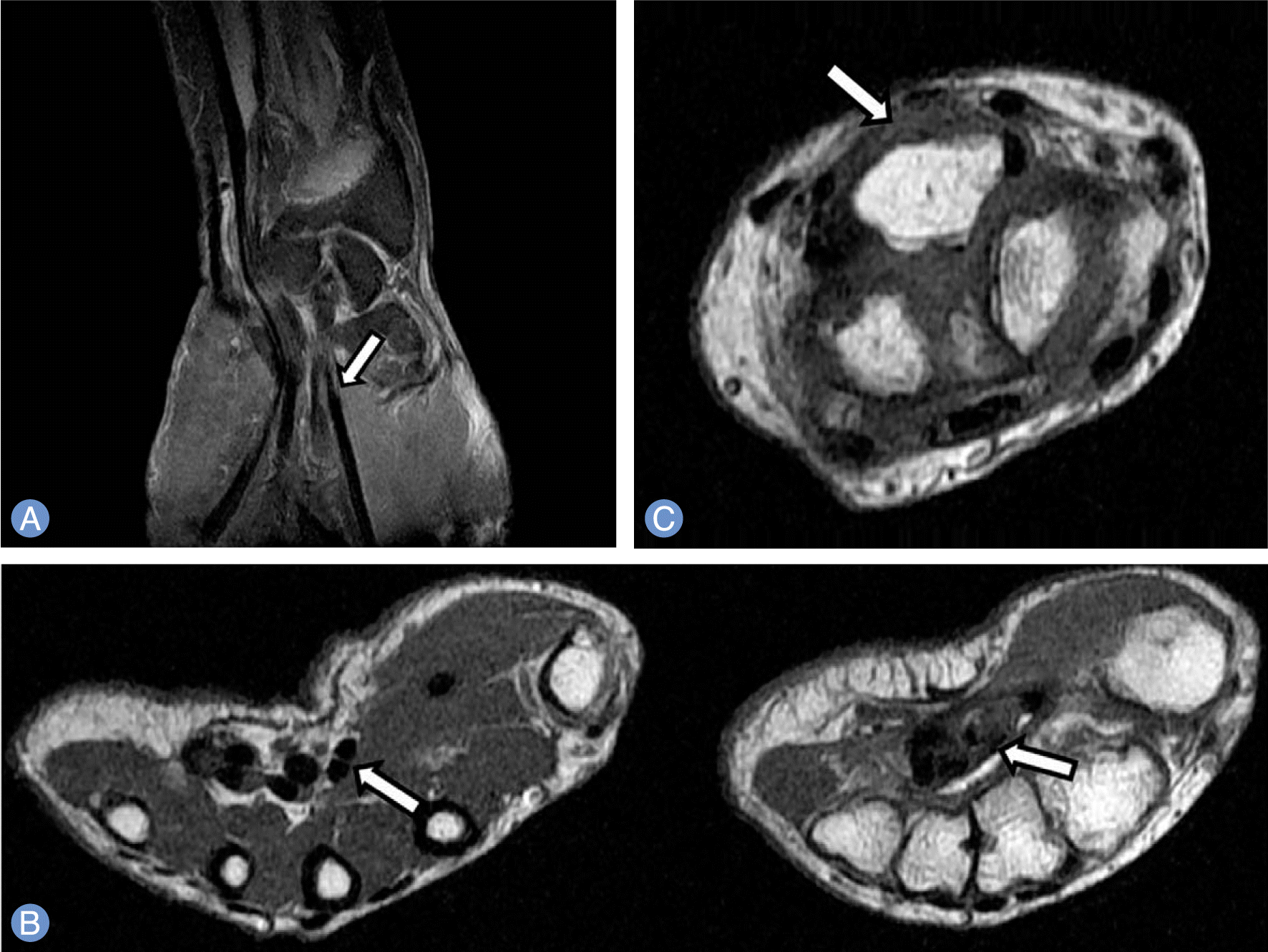 | Fig. 2.
(A) Magnetic resonance image (MRI) (coronal view) shows third, fourth, fifth flexor tendons are ulnar deviated due to lunate dislocation and discontinuity of second flexor tendon (arrow). (B) MRI images (transverse view) show second flexor digitorum profundus & superficialis (left arrow) has continuity at metacarpabone level but second flexor digitorum profundus & superficialis both is abscent (right arrow) at carpal level. (C) MRI image shows anteriorly dislocated lunate compress the median nerve (arrow). |
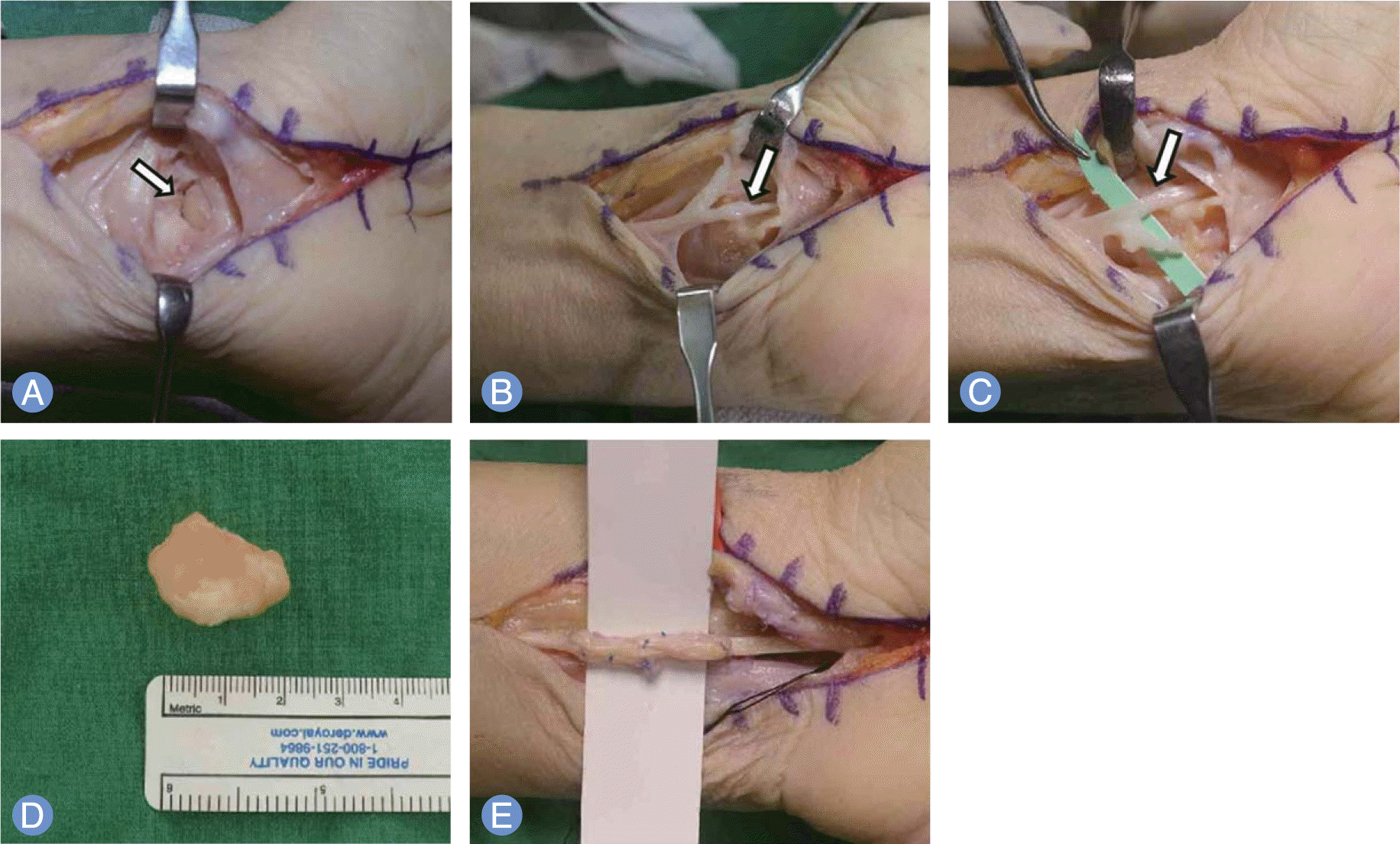 | Fig. 3.
(A) Lunate (arrow) was dislocated anteriorly. (B) Median nerve (arrow) was artrophied by compressive force. (C) second flexor tendon totally ruptured by dislocated lunate. but tendon Sheath (arrow) of second flexor digitorum profundus was remnant state. (D) We excised a dislocated lunate bone. (E) second flexor tendon was repaired using autogenous palmaris longus tendon graft. |
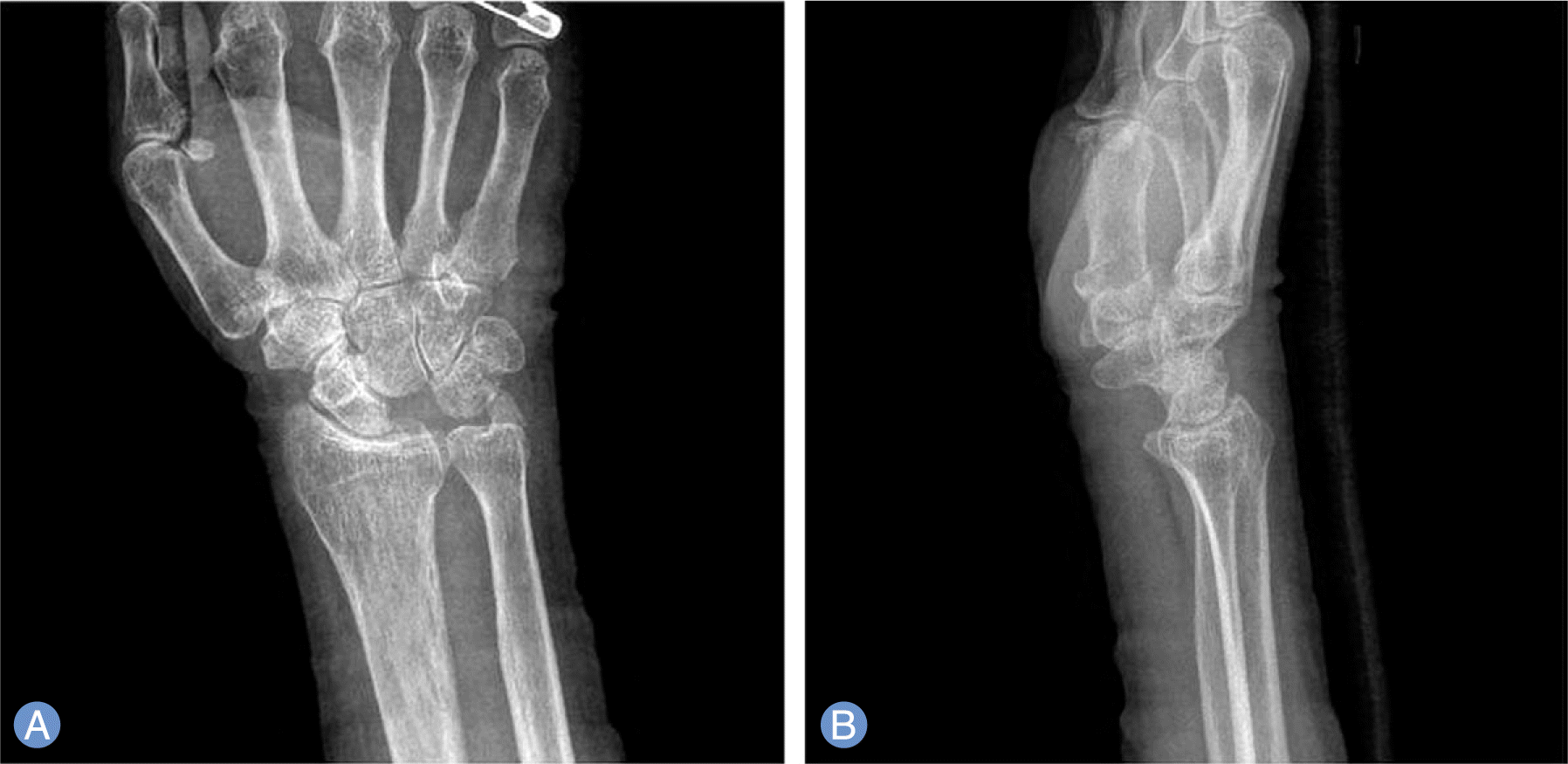 | Fig. 4.
(A, B) Postoperative radiographs (anteriorposterior view, lateral view) show totally excised lunate bone. |




 PDF
PDF ePub
ePub Citation
Citation Print
Print


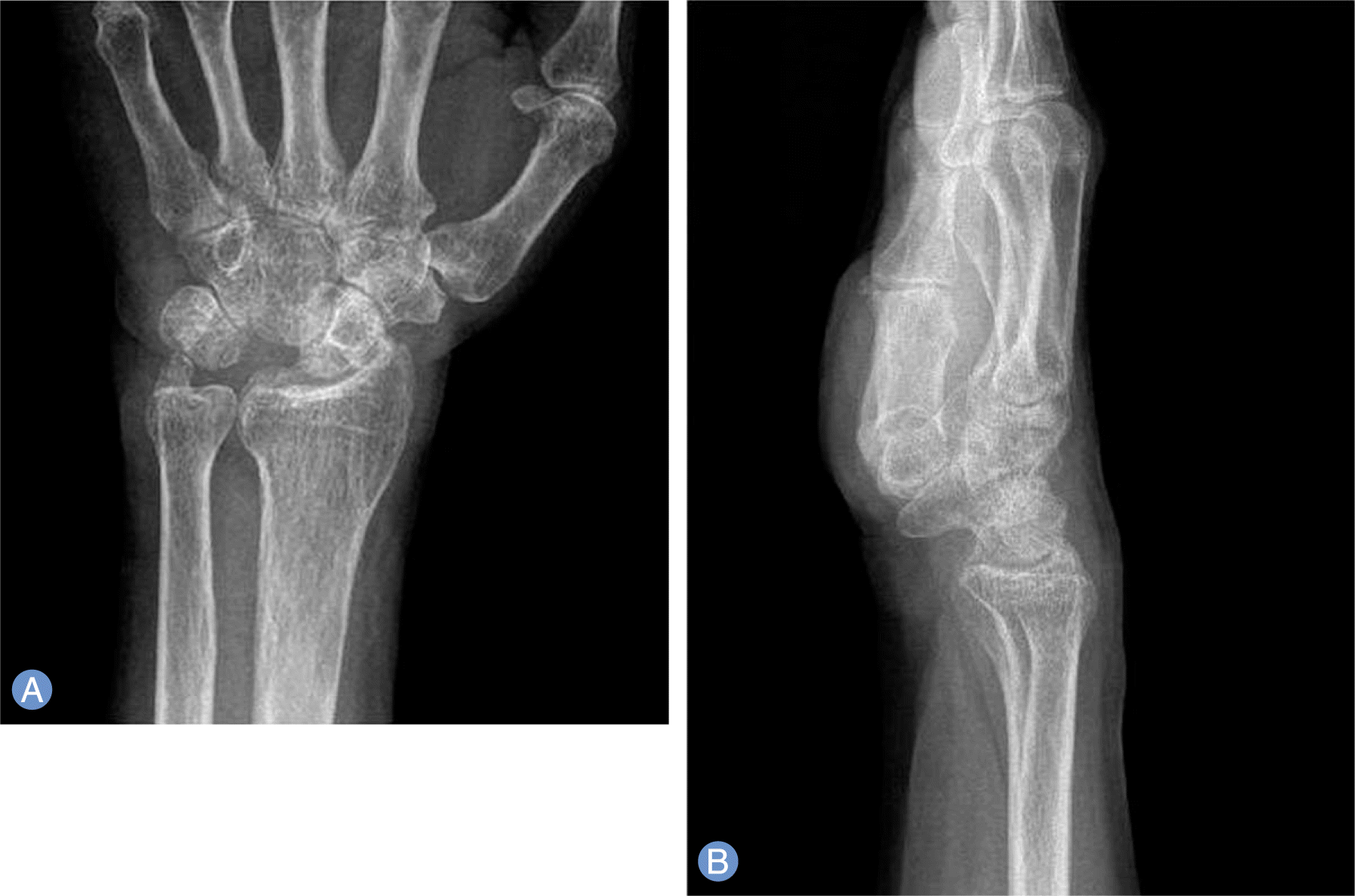
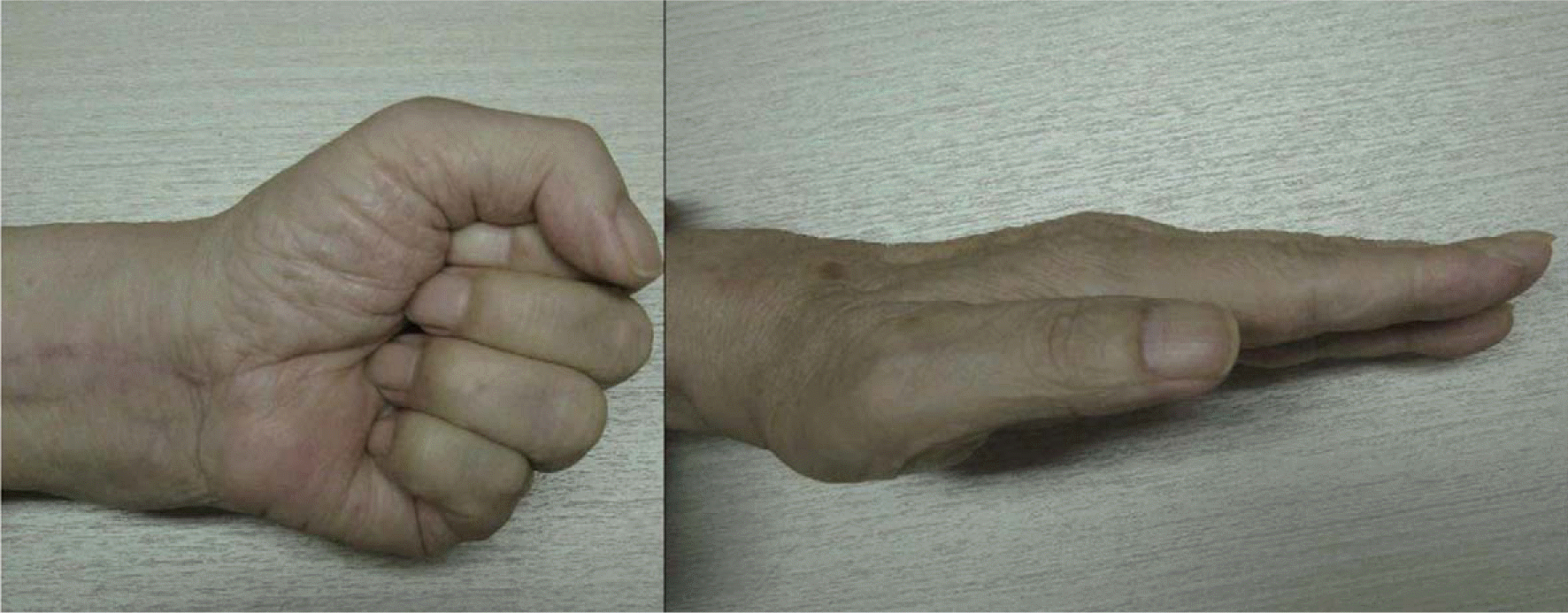
 XML Download
XML Download